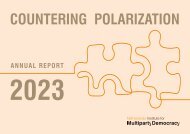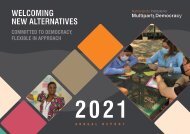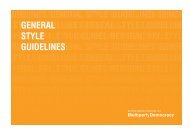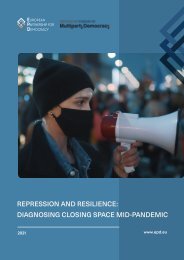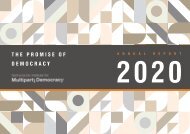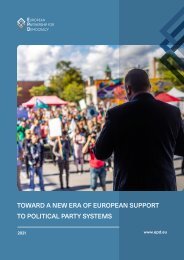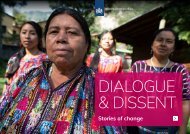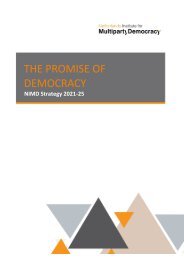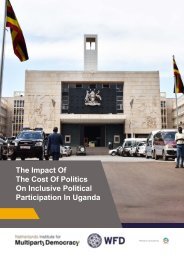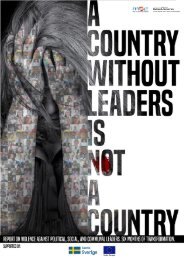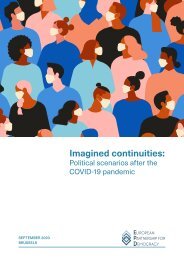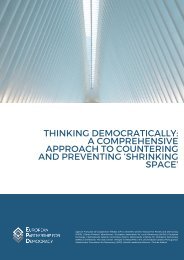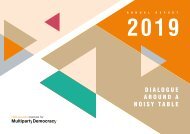Political Party Guidelines Eng
Create successful ePaper yourself
Turn your PDF publications into a flip-book with our unique Google optimized e-Paper software.
Example: Gender mainstreaming a development project in Myanmar
An international organisation initiated a program and provided grants to local civil society organisations
(CSO) to increase household livelihood opportunities through economic empowerment. Gender mainstreaming
is a key requirement of the organisation. One local CSO applied gender mainstreaming into a
project called “Land and Property Rights in Karen State” in 2017-2018 in the following way:
• Conducted situation analysis of the targeted villages (who does what, who possesses
land and under whose name).
• Explored obstacles (both direct and indirect) for men, women, and vulnerable groups
such as disabled and people belonging to ethnic minorities to access land and housing.
• Identified entry points (key influential persons and groups) and a champion for gender
equality.
• Organised community awareness sessions for land rights, linkages between gender
equality and development, and joint registration.
• Facilitated joint land registration (provision assistance for registration at the township
government office).
• Organised sharing sessions for land registration (led by the male champion for joint
land registration).
The project did not significantly change the traditional practice, where the land is registered under the
male heads of households. However, it was a good initiative and a foundation to lead towards gender
transformation.
We could also think of mainstreaming as integrating gender equality to be a fundamental part
of all policies. If we want to succeed in this integration, we first have to give attention to gender
perspectives in all activities across all programmes. ”Gender perspective” means that whatever policies,
programmes, or advocacy we do, we first think of the implications of the planned actions for women
and men, girls and boys. It is making gender visible in the planned activity.
It sounds very simple but it can be a little tricky, as we have to figure out beforehand how the planned
action will affect different people. And to be able to do that, we need to know the situation of people
now, before the action. But not only this: we need to know the situation of boys and girls, women and
men. For this reason it is really important to have gender-disaggregated data. Another important
thing is not to take stereotypical assumptions of the situations of men and women as the baseline. All
information must base on facts.
GENDER EQUALITY: A SHORTCUT TO DEVELOPMENT AND PROSPERITY 11




